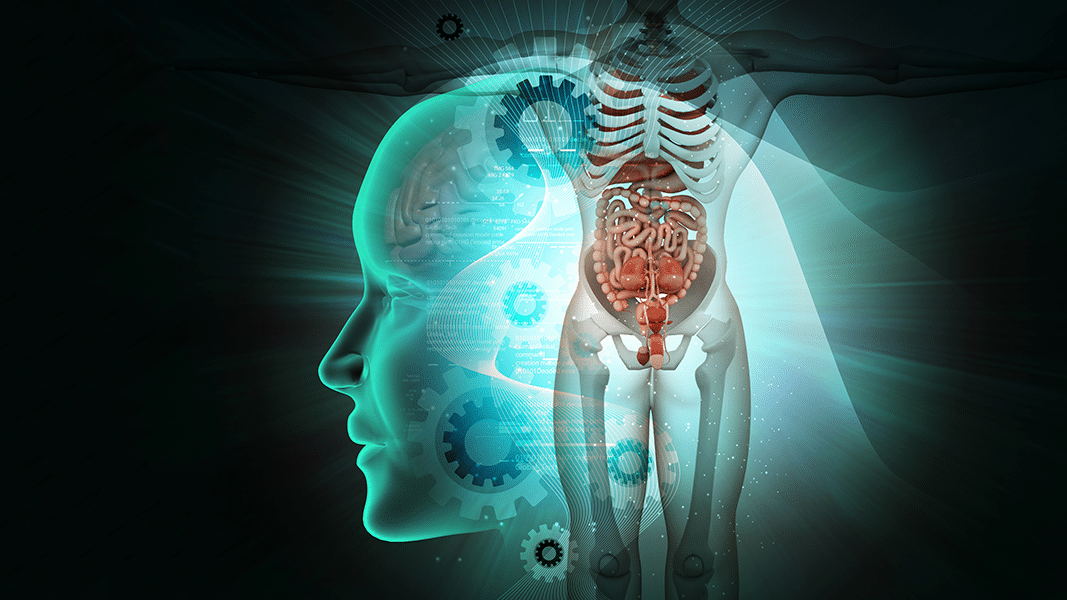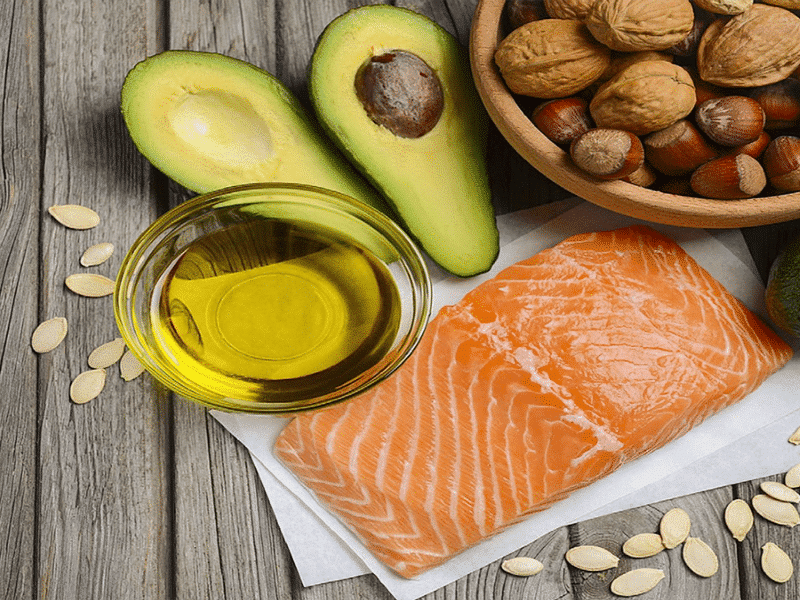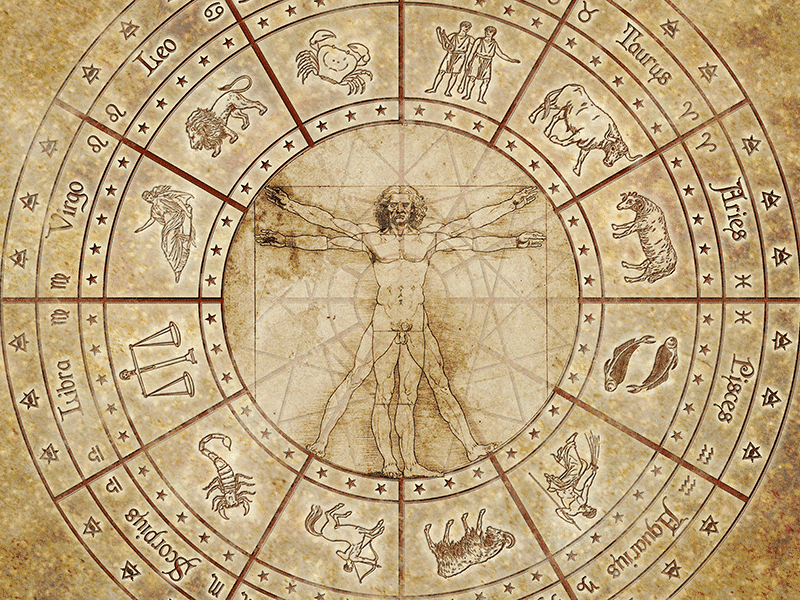Project CBD: Welcome to another edition of Cannabis Conversations. I’m Martin Lee with Project CBD and today we are privileged to have with us in the studio Dr. Rachel Knox, who is the co-founder of the American Cannabinoid Clinics, with other members of your family who are also physicians. Also, you are the chairwoman of the Oregon Cannabis Commission. We’re glad you can join us. I wanted to ask you about something you’ve been lecturing about to various audiences –- you refer to endocannabinology. Maybe you can tell us what is endocannabinology?
Transcript
Knox: In medicine we silo our fields into “-ologies” really. So people are familiar with cardiology and endocrinology, neurology – and really what we mean is the study of the function and dysfunction of those systems. So, in cannabis medicine the focus for a long time has been on the cannabis, but people come to us with physical conditions and we doctors are trained to treat the patient. What we’re really treating is the endocannabinoid system when we’re assessing different disease processes or symptoms. And, so it made sense to me and my family at the American Cannabinoid Clinics to call ourselves endocannabinologists who practice endocannabinology. And we use cannabis, which is probably as far as we know, the most versatile tool that works on that system, but along with lots of other things that help us treat that system. So endocannabinology means the study of the function and dysfunction of the endocannabinoid system and all the ways we can modulate it.
Project CBD: Let’s talk about the endocannabinoid system. What is its purpose? How do you break it down in terms of its components?
Knox: As far as we know, right, because there’s still so much more to know, but our understanding is that the endocannabinoid system is the maestro to the symphony that is every physiological system in the human body. And its role is to keep us in balance, to keep us healthy. So, a perfectly functioning and in tune endocannabinoid system keeps us in perfect health.
But the reality is that we’re inundated with toxic environments, and emotional and physical stress, and poor foods – you name it. This endocannabinoid system of ours is having to battle a lot of insults today. It’s really hard for it to keep us in balance, which is why so many people are struggling with so many diseases. But again, its role is to keep us in balance. And it does that through a very intricate feedback loop. It’s constantly in flux. It’s constantly adapting and reacting to everything that we’re throwing at it. And so it has to work in sort of a feedback system in response to what we’re throwing at it.
For a long time, we’ve talked about the endocannabinoid system in four components. We talk about the four components of it: The first components were discovered between 1988 and ‘92, and those were the CB1 and CB2 receptors, mixed in there was the first endocannabinoid (or endogenous cannabinoid, cannabinoid made in our body) anandamide; shortly followed by 2-AG. So we have the cannabinoids that were on those cannabinoid receptors, like a lock in a key. And then we have the enzymes that create those endocannabinoids on demand when they’re needed; again constantly responding to stimuli. And we have the enzymes that break those cannabinoids down when they’re no longer needed. It is a system that runs all by itself. We call it auto-regulatory. And it works when it’s needed, on demand, in response to, again, what we’re doing to it.
Project CBD: So why, if we have this system and it’s working all the time, why do we need cannabis then?
Knox: Because – I mentioned the things that we’re doing to ourselves in today’s age – we talk about inflammation as the root cause of disease, and that’s true. We’re causing inflammation. But the endocannabinoid system is immunomodulating, it’s supposed to keep inflammation in check. It can’t do that when we’re constantly eating inflammatory foods or we’re constantly under stress, right.
The endocannabinoid system works like this. So if a cell is sending signals of pain or stress or inflammation to each other, well the receiving cell is supposed to create an endocannabinoid that it shoots back to the cells sending that signal to turn it off, to restore balance and harmony. Unfortunately, we’re getting in our own way in some respects. The system is being overwhelmed and overloaded with constant signal of stress, pain, inflammation. It’s very difficult under those conditions for it to properly make these endocannabinoids.
We need to eat Omega-3 and Omega-6 fatty acids to even make these cannabinoids. A lot of us are deficient in the foods that are essential to even create these endocannabinoids. And we’re working at a deficiency, right. So there comes in a very good place for phytocannabinoids. So THC – it’s been around for a long time in our colloquial world around cannabis. THC is an anandamide mimicker. Anandamide was that first endocannabinoid that was discovered. Well THC mimics it. So if we’re having trouble developing anandamide it makes sense to supplement with THC for it to take the place of anandamide and help restore some of that function by working on those cells that are constantly sending those signals of pain and stress and inflammation.
It’s kind of like in conventional medicine where we might recommend a supplement to a patient. If you’re deficient in Vitamin D, well we give you exogenous Vitamin D, you take it in a pill form. Using THC in that way to supplement anandamide is no different than what we already do in the conventional world.
Project CBD: So, it would be similar for CBD, cannabidiol, the non-intoxicating cannabinoid. How does CBD play into this?
Knox: Similarly, in general THC and CBD have a lot of overlapping downstream effects. But CBD does not mimic our anandamide or 2-AG. CBD does something very special with respect to THC and anandamide. And what that does, it blocks the breakdown of anandamide. So wherein we might use THC to supplement somebody who’s deficient in anandamide, we might use CBD to prevent the breakdown of anandamide and keep the anandamide levels higher indirectly.
CBD also binds what we call allosterically to the CB1 receptor. And when it binds allosterically, meaning not at the same site THC binds to but maybe over here, it changes the conformation of that receptor site. So THC binds to it, but a little bit differently. And that’s one of the reasons we think CBD has such a significant impact on diminishing or dampening the intoxicating and euphorigenic properties of THC. That’s one of the reasons I think people like to say “use THC and CBD together, they work better together.” In truth, yeah, they work synergistically. Again, for patients who don’t want the intoxicating or euphorigenic effects, we can use them in concert to diminish those sometimes unwanted effects of THC – certainly sometimes they are wanted!
And then CBD works on 65 and counting other receptor targets, enzyme targets. It works on the serotonin system, on the opioid system, and I can list many other systems. But CBD works well throughout the body in so many ways. Phytochemicals in general do. We talk a lot these days about the entourage effect of cannabis, but in our clinics we talk about botanical synergy because we recognize also the benefit of including other botanicals in a formulation with cannabinoids or outside of it. We might be recommending your cannabis product plus your echinacea plus your mushrooms, along with a whole other host of things.
Project CBD: I was going to ask you about that. In terms of the patient populations that you are ministering to, how much of it is strictly cannabis-focused or is it generally that cannabis is a piece of the puzzle and other herbs or holistic healing modalities – or maybe non-holistic, maybe pharmaceutical modalities – would play into it. How does that work in your practice?
Knox: Well 100 percent of patients are coming to us looking for a cannabis solution. Our clinics are called the American Cannabinoid Clinics – it’s in the name. People know what they’re going to get when they come to us. But we do a lot of re-directing as soon as those patients hit the chair. We teach about the endocannabinoid system and all the things that stimulate it. And so, folks will leave with the understanding that nutrition comes first followed by, if not equal to, phytocannabinoids (cannabis). Because again, cannabis is the most versatile botanical that we know that works on that system.
So along with nutrition, which is foundational, we need that to survive– none of us are going to survive on cannabis alone, we need to be eating natural whole foods that our body requires to even create new cells. We have to address that. But then, cannabis is a close second. We get into detoxification for the endocannabinoid system, supplementing with other botanicals to tone and help soothe the endocannabinoid system. We talk about stress reduction. We talk about spirituality. We’re talking about everything that modulates that system.
I haven’t said the fancy new word yet that I mentioned yesterday: cannabimimetics. We speak in terms of cannabinoids in cannabimimetics. Cannabimimetics really do encompass just about everything else that we talk about. Cannabimimetics are substances, non-cannabis substances, or practices that stimulate the endocannabinoid system, too. So again, we have our cannabinoids, then we have everything that falls under the cannabimimetic category, which is nutrition, detoxification, supplementation, physical activity, deep breathing, yoga, meditation, acupuncture – the list goes on there. We talk to patients about all of those things.
Project CBD: One last question, sort of food for thought. You have emphasized the significance of diet. And you mention specifically the Omega-3, Omega-6, the essential oils as being very, very important, if nothing else as building blocks for components of the endocannabinoid system. I’m not one who believes there is one perfect diet. Diets do vary in culture to culture, place to place, but if you were to outline some of the do’s and don’t’s in terms of a diet that facilitates healthy endocannabinoid functioning, what would that be? What would that look like?
Knox: Natural, whole foods. I agree, when we eat natural whole foods it doesn’t matter if you’re a vegetarian, a vegan, a paleo, or Keto subscriber, you are really – how can I say this – that’s like 50 percent of the battle right there. Just eating real food. Overly processed foods are hard to digest. You could make the case of using digestive enzymes to help us digest these overly processed foods, but the fact of the matter is these chemicals and preservatives are really hard to break down. And for the most part, we’re not getting the nutritional benefit from a lot of these processed foods because we just can’t break them down. We don’t have the capacity, the capability to break those things down. Prebiotics, probiotics, those are also great to supplement our diet with. But natural, whole foods, and I feel like when people convert to a truly natural and whole food diet, within 30 to 60 days they’re feeling 40, 50, maybe even 60 percent better than they did already. When we then shift some emphasis onto foods that are higher in fat, we see an even better outcome.
Project CBD: So healthy fats are really key.
Knox: Healthy fats, are so, so, so important. In our clinic we talk about the ketogenic diet a lot. But you can have a whole plant-based ketogenic diet that works really well for you. And then you can have what we call a traditional ketogenic diet, where you are eating protein from meat sources and do really well. For us, emphasis is on getting that fat, high-quality fats. Some really great high-quality fats are hemp seed oil, olive oil, coconut oil, avocado oils, are all really great to use daily. I typically recommend getting 5-7, if you’re a woman, and 6-9 tablespoons of high-quality fat every single day. You know, the preferred fuel of all of our cells is fat. Out of fat comes our Omegas that we need for the basic building blocks for anandamide and 2AG and our secondary endocannabinoids. By consuming a low-fat diet, even if it’s natural and whole in nature, we’re still behind the 8-ball. So, natural whole foods, step one. Step two begin to increase your healthy fat consumption. And that to me is a diet for, or a recipe for, modulating the endocannabinoid system.
Project CBD: I think a take-home message of what I’m hearing from you, is that cannabis is very important as a healing modality, but it really works best in conjunction with healthy diet, healthy lifestyle. I think that’s a good note to end on. I appreciate very much your insights and sharing that with us, Dr. Rachel Knox. That’s been another edition of Cannabis Conversations. Thank you.
© Copyright, Project CBD. May not be reprinted without permission.
Recommended Readings
Diet & the Endocannabinoid System
New research on how the ECS impacts hunger, diet, digestion, and energy metabolism.
The Endocannabinoid System
CBD offers hope for a non-toxic therapy to treat aggressive cancer without the painful side effects of chemotherapy.



